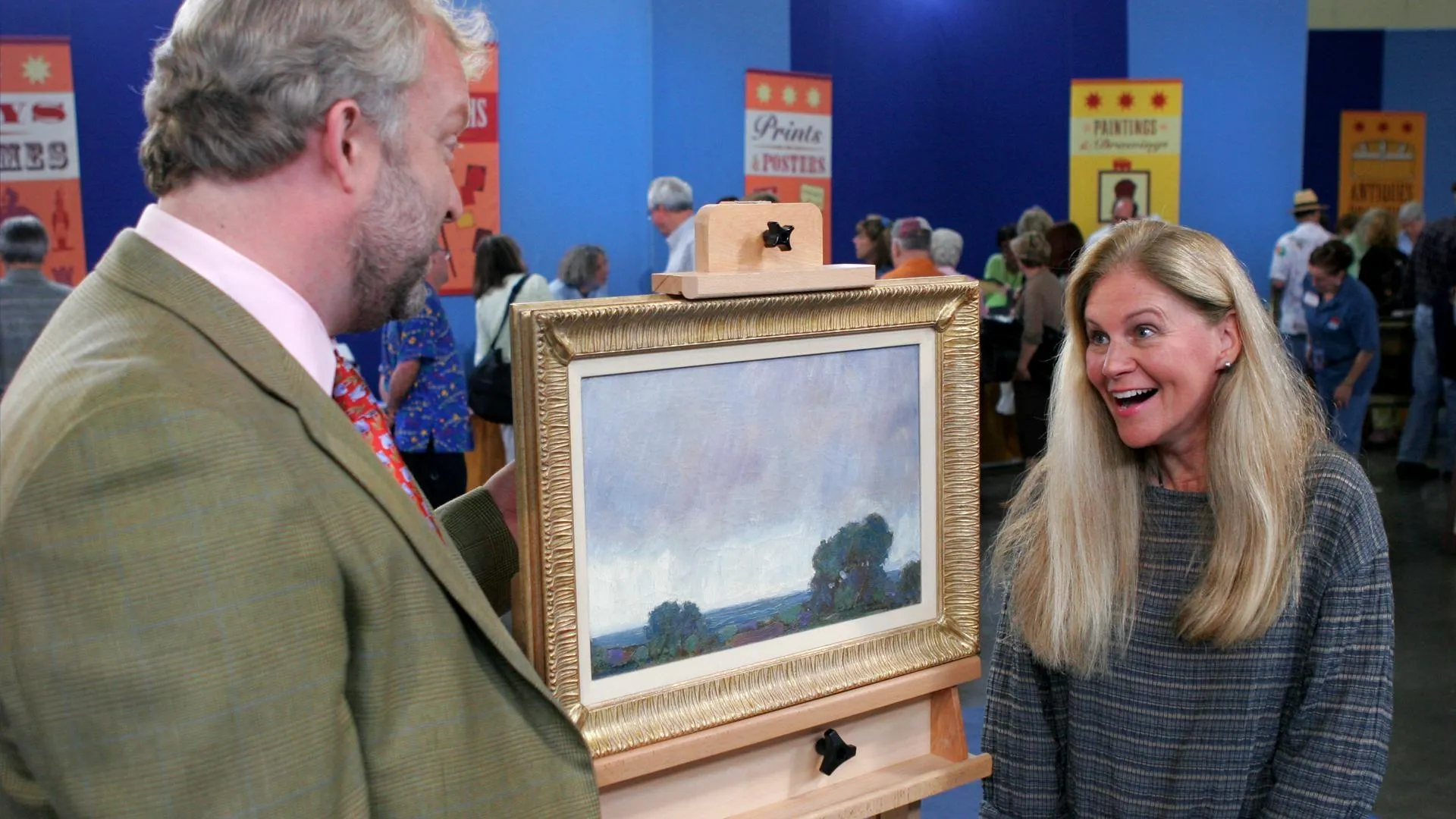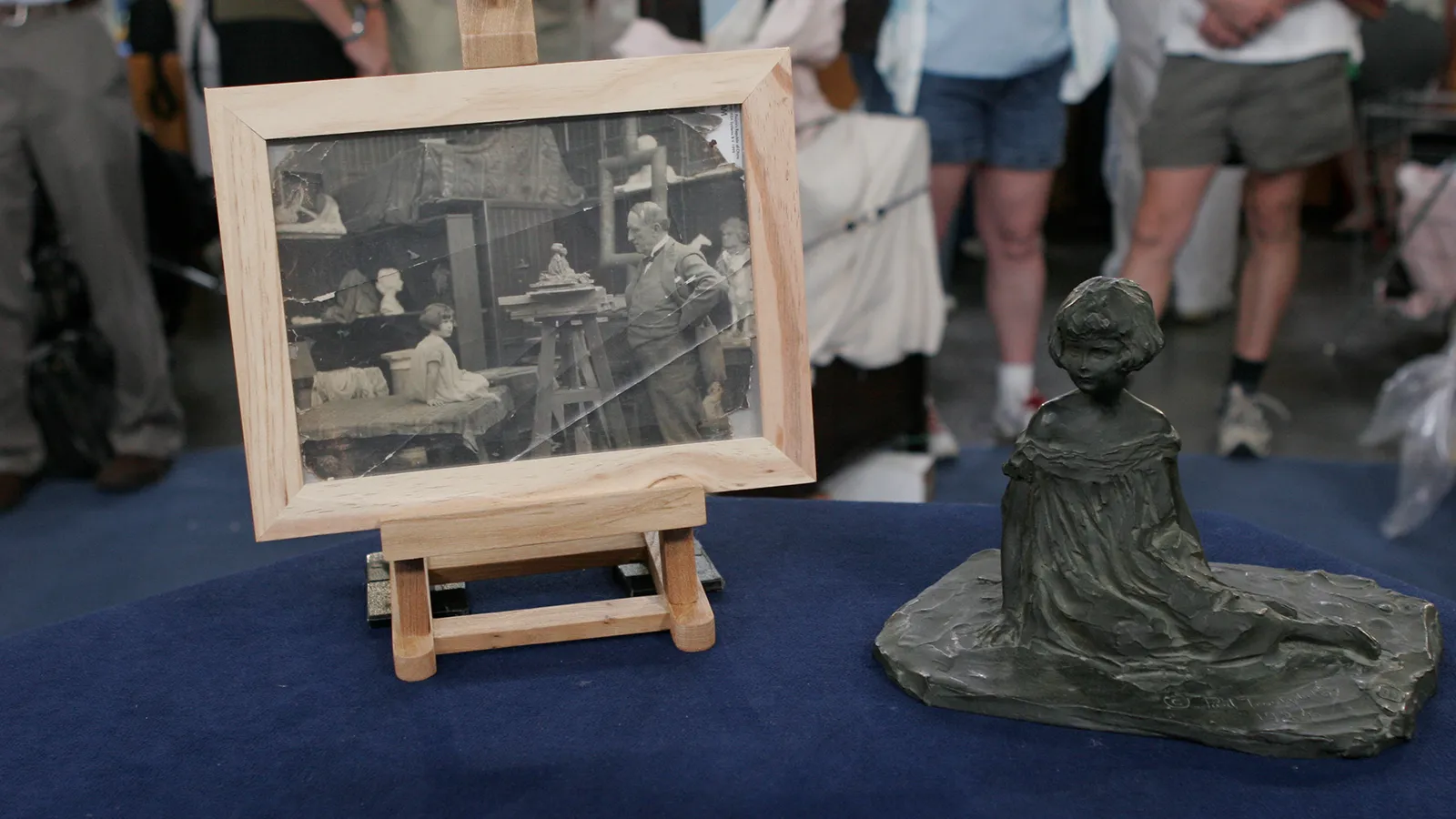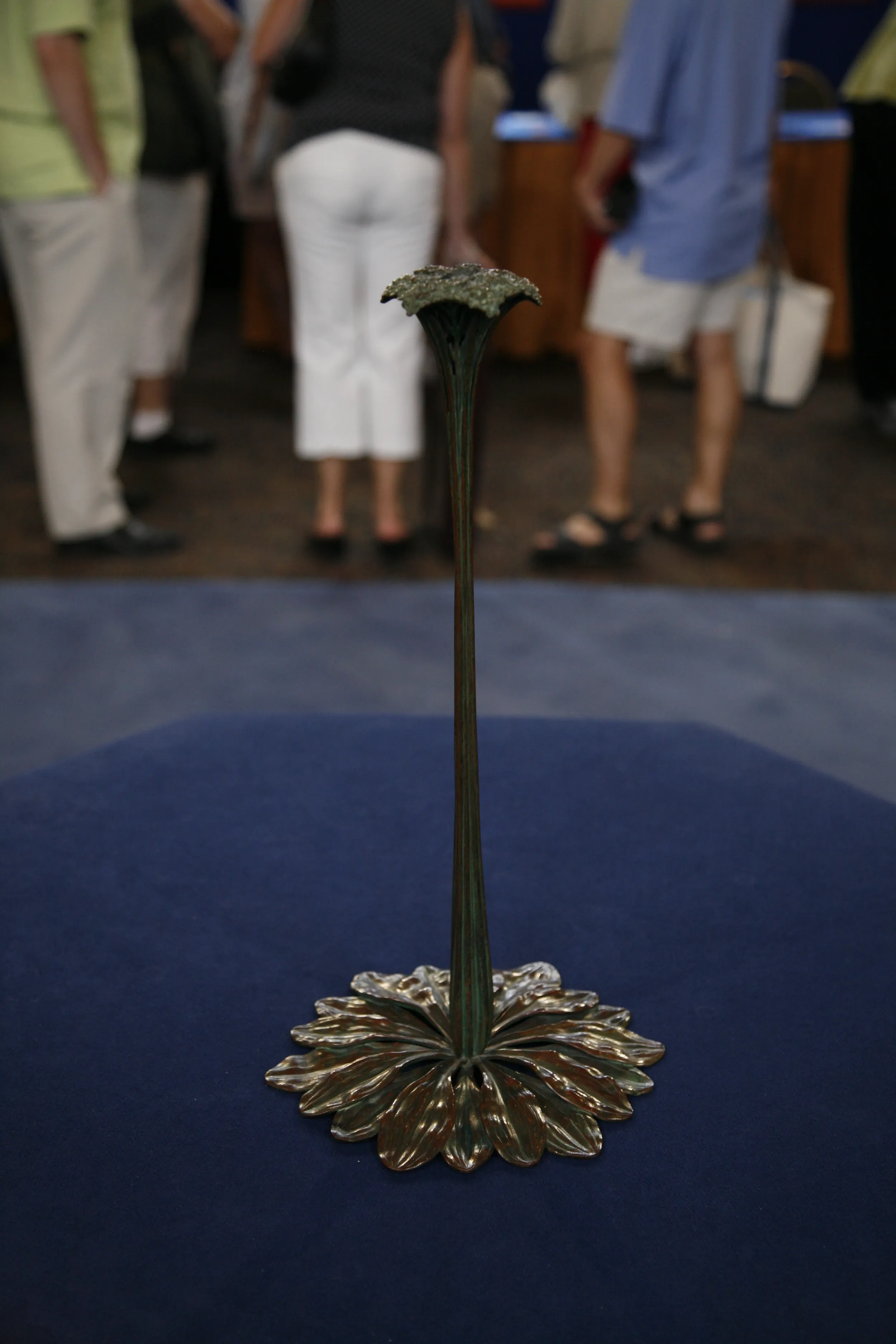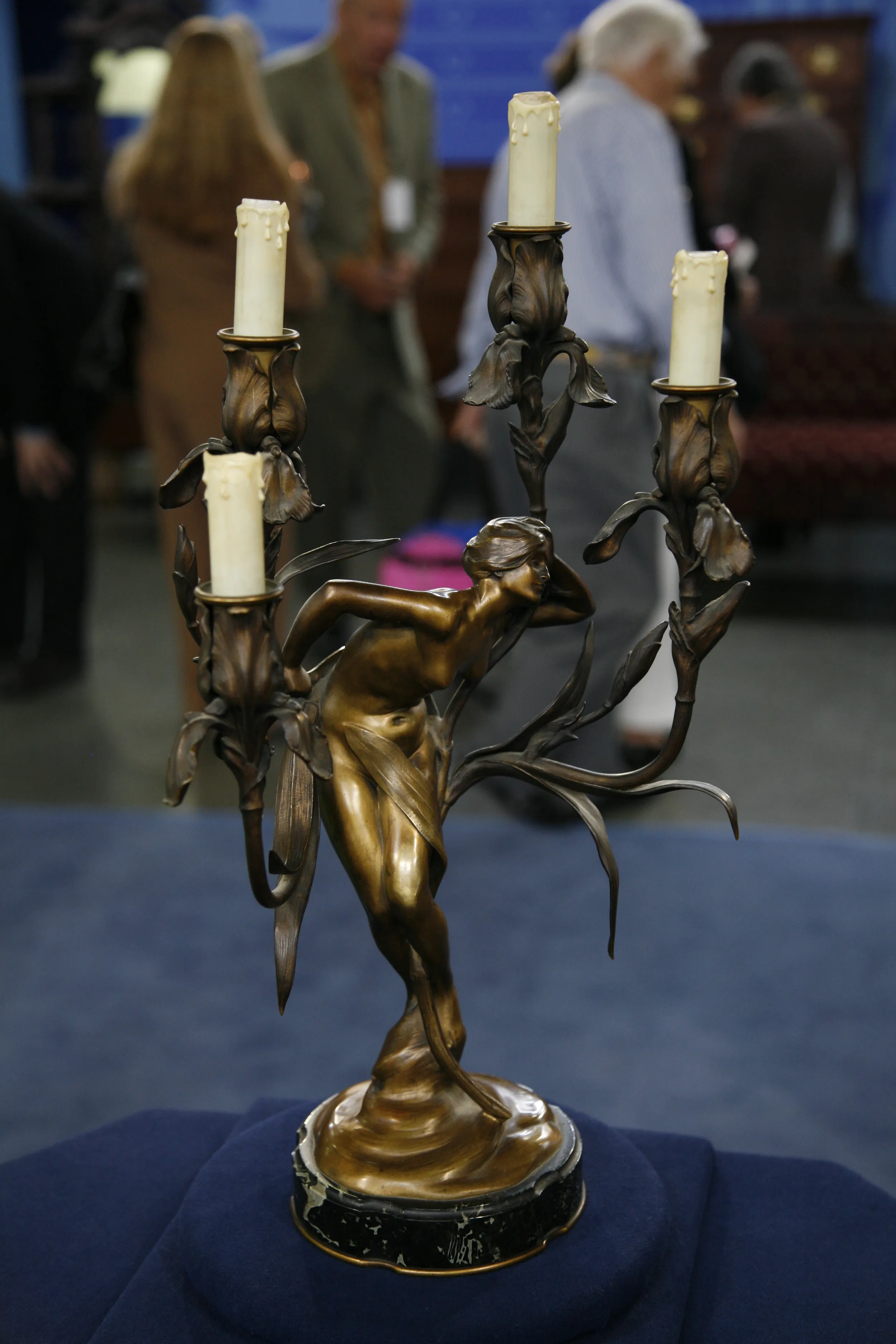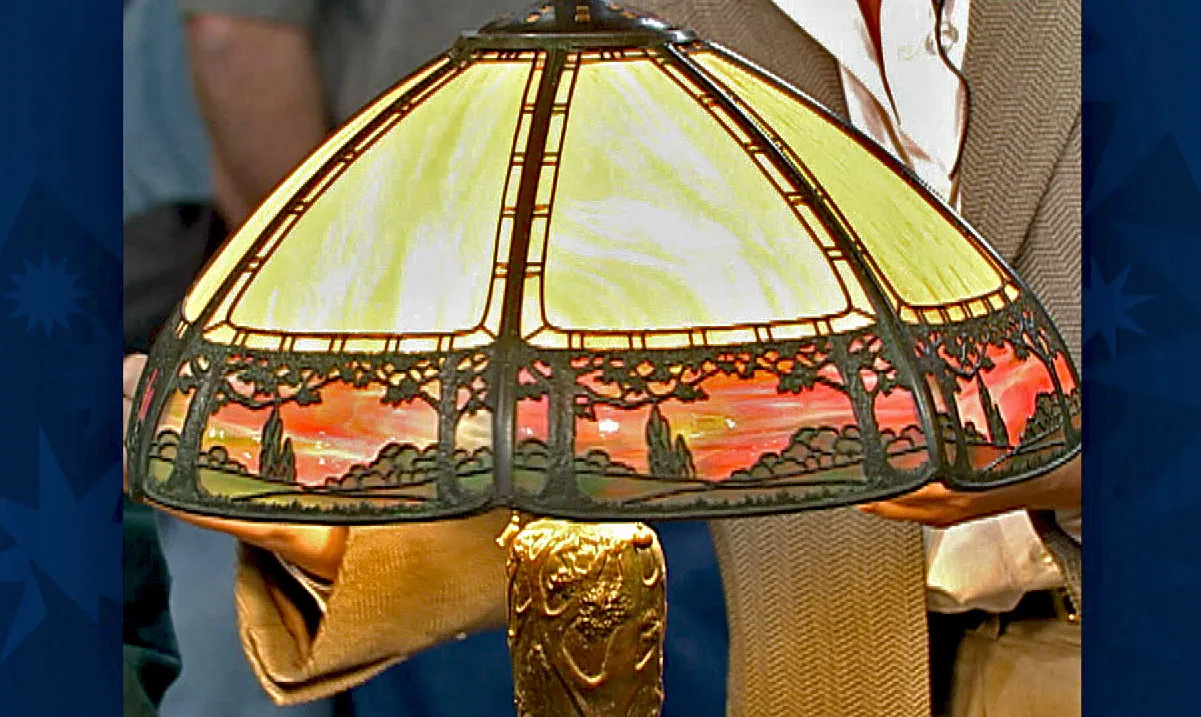GUEST: It was a gift to my wife 32 years ago from a store in Pasadena.
APPRAISER: Really?
GUEST: Yeah.
APPRAISER: Just strolling by and you saw this?
GUEST: Yeah, and I remember him telling me that it was $20.
APPRAISER: And what did your wife think of the lamp? Did she like it or...?
GUEST: She, she loved it.
APPRAISER: She loved it.
GUEST: We both loved it all this time.
APPRAISER: Uh-huh.
GUEST: And I've never known what it was. I've looked in books and she's looked in books.
APPRAISER: Uh-huh. Uh-huh.
GUEST: And, and so I was really curious to find out what it was.
APPRAISER: Right, right. You had lined up at another table.
GUEST: Exactly.
APPRAISER: And I, I saw it out of the corner of my eye. And I was very excited, because I knew exactly what it was, you know?
GUEST: Did you? That's great.
APPRAISER: It's actually a very, very rare lamp. It's by Elizabeth Burton.
GUEST: Really?
APPRAISER: Burton started in Santa Barbara, and then she also had a shop in Los Angeles.
GUEST: Uh-huh.
APPRAISER: I would date this piece probably in the 1910 vicinity, and she was part of the Arts and Crafts movement.
GUEST: That's what we thought, it was Arts and Crafts.
APPRAISER: Which is... it's... right. Usually, when you think of Arts and Crafts, you think of Roycroft, you think of Gustav Stickley. There was a San Francisco maker, Dirk van Erp.
GUEST: Yes, I've seen Dirk van Erp lamps.
APPRAISER: They're very different, they have more of a hammered finish.
GUEST: Right.
APPRAISER: They have a more Arts and Crafts look.
GUEST: Uh-huh.
APPRAISER: Her work has more of an Oriental feeling to it.
GUEST: Right.
APPRAISER: So your lamp has this wonderful lotus leaf on the bottom, with the curling standard, coming up with these leaves here and the shade made out of shell. And her work shows up in exhibitions of American Arts and Crafts. She represents this other aspect of the Arts and Crafts movement that was much more influenced by Asian, by Japanese art. It's in pretty good condition.
GUEST: Uh-huh.
APPRAISER: And, uh, it's not signed. Many things are not signed.
GUEST: Uh-huh.
APPRAISER: When she did sign it, she signed them with a monogram.
GUEST: Uh-huh.
APPRAISER: And your piece has some lead put on it. Somebody must've put some lead on the bottom to stabilize it.
GUEST: Right.
APPRAISER: So they may have covered up the mark, but it's really not worth taking apart, since this is her signature work. And this market is very strong. The piece is very, very desirable.
GUEST: Uh-huh.
APPRAISER: At auction, this piece would bring between $5,000 and $7,000.
GUEST: That's amazing. That's really wonderful!
APPRAISER: Isn't that great?
GUEST: That's great.
APPRAISER: Yeah, it is great.
GUEST: I really appreciate your knowledge on it.
APPRAISER: It is a little on the funky side, you have to admit.
GUEST: Yeah, it is, it's different.

